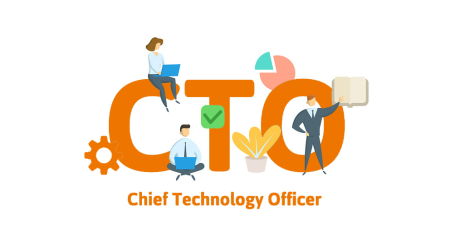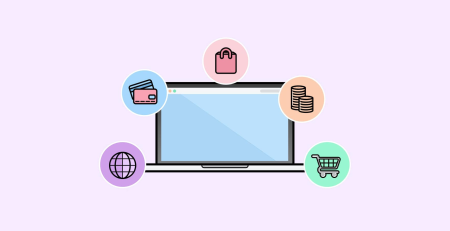How to create a startup product roadmap
When you’re organizing a wonderful family vacation, you make a precise itinerary, look up the fastest or most scenic routes to your destination, pick a nice hotel to stay the night, tell your family about your plans, and estimate your costs.
When it comes to releasing a viable software project, you’ll undoubtedly want to do something similar. That is the purpose of a product roadmap.
But how can you create a roadmap when your aim is more than just going on vacation?
After reading this post, you’ll be able to develop a product roadmap as effortlessly as you would plan a vacation to Hawaii. Prepare to learn about the role of a product roadmap in project discovery, as well as some dos and don’ts for establishing a product roadmap and how a well-designed roadmap can save you time, effort, and money.
The importance of a product roadmap during the discovery phase of a project
You must first picture something amazing before you begin working on it.
How do you want your product to assist you or your potential customers? Will it amuse consumers or aid them in their studies when they use your app? Or will you be able to sell your goods over the internet? What is the project’s expected outcome?
Why do you wish to make your concept a reality?
A project discovery phase can assist you in answering these questions accurately, avoiding errors, and reducing the cost of project development. Multiple deliverables emerge from the discovery process, as described in one of our previous articles. In this post, you’ll learn how four of them – the project’s foundations — are connected.
Product vision
The product vision explains why your project should be created in the first place and what competitive advantage it will have over competitors.
Product strategy
This is the idea that will assist you realize how to convert your product vision into a reality.
Product roadmap
The roadmap describes how to put your strategy into action; it’s a simple but adaptable plan of action for achieving your objectives. We’ll come back to it later.
Product backlog
The product backlog comprises all of the information needed by the development team to provide the desired functionality.
These four deliverables are inextricably linked to one another. The clearer your vision is, the better your strategy will be, the more precise your roadmap will be, and the more detailed your backlog will be.
At the same time, if your product vision is hazy, there’s no way you’ll be able to establish a viable strategy and plan.
As a result, the first stage in creating your roadmap is to ensure that you have a clear vision of your strategy – a high-resolution picture of how your product will flourish in the market. Make sure you understand all of your product’s benefits and drawbacks, and that you believe in its success. “Life is too short to work on something you don’t believe in,” says Roman Pichler, an Agile trainer and consultant.
What is a product roadmap?
Now that you understand the need of developing a specific vision for your product, it’s time to learn about a product roadmap.
A product roadmap, according to Marty Cagan’s book Inspired, is “a prioritised list of features and tasks your team has been requested to focus on.”
You can start shortlisting and prioritising product features once you have a precise vision of your future product. That’s when difficulties may arise.
You may try to explain what you’re going to do next to your partners, demand a feature soup from your development team, establish excessive expectations and schedules, and waste time on development that won’t lead to a successful deployment.
A product roadmap comes to the rescue. It lets you express your project vision with all stakeholders by converting business decisions into actions.
Who are the people involved in the product roadmap?
When it comes to starting a business, you should never go it alone. The people who surround you are stakeholders who must share your vision and participate in the creation of the product roadmap.
A startup’s typical stakeholders include:
- Project owner
- Project manager
- Project development team
- Investors
- Sales and marketing team
These are the professionals who help with project planning, management, and product promotion.
You could also wish to create an external product roadmap that you can share with potential clients. This roadmap could be utilised in a marketing campaign. It’s critical that the plans outlined in your internal product roadmap match those displayed in an external document.
You’ll need the input and expertise of stakeholders to establish and approve the product plan. It may take no more than four to six hours to complete this process once all stakeholders are well-prepared to build the product plan.
If you work on the roadmap by yourself, you’ll not only need more time to deal with it, but you’ll also be more likely to make important errors and waste time on a document that won’t benefit you.
How to prepare for product roadmap development?
To emphasize, establishing a product vision is your top priority. Continue your preparation when you’ve finalized your vision:
Consider the stability of the market
If you’re developing software for an existing company, you already have all the information you need about the target market and its needs. Building forecasts and plans is nothing new for you, and you may use this strategy to establish a roadmap for your software project.
When you work for a startup, however, you may find yourself in a red ocean of uncertainty and fierce competition. Occasionally, similar goods will appear; industry leaders may augment their apps with feature that overlaps with your product’s planned capabilities. All of these things entice your target audience and reduce your chances of attracting their attention. As a result, you’ll need to act quickly, be adaptable, and pivot if necessary.
Analyze the target market, set your goals, and plan future activities to better understand what you should build and how quickly.
Analyze the value your product will provide
Users will not download your software simply because it is available. They will only install it if they have a pressing need for it or if they are enticed to do so.
Is your software valuable enough to draw attention and entice customers to hit the download button?
To stay afloat, your product must provide something unique. Create a unique selling proposition that not only explains how your app is superior than others, but also underlines why potential users should select your app over another one and how it will deliver more value.
Before you begin planning your strategy, demonstrate the value and distinctiveness of your solution.
Set goals
Make your goals as specific as possible when you set them.
I want my app to succeed, but that isn’t a goal because success is a vague notion.
It’s better if my app has been downloaded more than 100K times, but that’s still ambiguous. In six months or five years, your app could have 100K downloads. Furthermore, downloads may be the result of a good marketing campaign rather than the utility of the product.
Make your accomplishments quantifiable. Consider the following elements to best represent your app’s success: net revenue, collected investments, app store rating, or any other important indicators.
Decide on the primary success factor and add several secondary ones. You’ll need them for your roadmap.
Detect constraints
Are you pressed for time? What is the size of your engineering team? Do you have a budget constraint? How do you secure funding for your startup? What are the most obvious roadblocks to a successful app launch?
Identify restrictions and pin them to a visible surface so you don’t forget about them when you create your product plan. If you ignore these limits today, they could become problems, issues, or even project failure later.
How to create a product roadmap?
It’s time to rearrange your objectives and priorities and create a product roadmap now that you’re familiar with the market condition, your strengths, and your deficiencies.
How can agile methodologies be used to generate a product roadmap? Follow the steps in this instruction:
1. Choose your focus
A product roadmap is essentially a timeline that depicts the progress of your project. During the early phases of a startup, you should decide what exactly constitutes progress. Is the introduction of new features a good way to explain the evolution of your product? Or achieving specific objectives over a set length of time?
Depending on what you map on a roadmap, you will get a:
- Feature-based roadmap
This is a common sort of roadmap used by IT departments. It provides information on each feature, including its priority and due date, as well as a map of these features.
- Goal-oriented roadmap
A goal-oriented roadmap gives product development additional context. Why did you include each feature? What is the purpose of a certain sprint of development?
You move closer to a common vision of product success and assure the results will meet your expectations when you define your aims in greater detail to the development team.
2. Master prioritization
The following step is to identify and priorities crucial goals (and features).
Make a list of your primary objectives and decide which ones should go first on your roadmap. To focus on the most helpful aims and tools, conduct a cost–benefit analysis. Compare the amount of work required to achieve a specific objective to the influence that goal will have on the overall outcome.
Answer the following questions to help you prioritise features:
- What benefits do I expect the product to provide?
- Are there any risks if I do not add this feature?
There’s no need to cram hundreds of features into your two-week sprints and expect your development staff to deliver them all. Take a step-by-step strategy, adding key features one at a time. In the meanwhile, assess their impact on the product. There may be ample time to improve and expand your product’s functionality. However, if you don’t priorities features and release on time, you’ll be disappointed.
3. Determine your resources
Investigate the time and budget at your disposal. Think about the team you can work with.
- Time and window of opportunity
People often use the phrase window of opportunity to describe a time period during which an opportunity must be seized or lost (perhaps forever). The notion of a window that opens for a while and then closes highlights the fleeting nature of opportunities, where timing is everything. Too early can be as bad as too late.
Harvard Business School
What is the duration of your window of opportunity? How much time do you have to provide a particular feature to your clients before another company does the same?
It’s all about the correct timing. If you can clearly see that market demand is increasing, don’t spend any more time and begin looking for ways to meet it.
Calculate how much time you have and set realistic deadlines.
- Budget and rough development cost estimate
Let’s return to the topic of vacation planning on a tight budget. When you do this, you strive to maximize the amount of money available by optimizing resources. You look for toll-free highways on Google Maps, look for cheap Airbnb stays, check your email for petrol coupon codes or other special offers, look for budget travel advice, and so on.
However, before you get into the mechanics of MVP development, you should know what your budget is.
For effective development, an estimate is insufficient. When making yes/no decisions, take the following approach:
- Say yes and go for product development if the rough estimate matches your budget.
- Say no, adjust your startup product roadmap, or change the entire product strategy if the estimate is much higher than your available budget.
- Development team size and composition
With how many specialists do you collaborate? Is your team capable of delivering prioritized functionality on time and within sprints? Speak with your technical team and try to come to an agreement on the development process’ vision.
To ensure that your capacity is sufficient, add more professionals to your development team.
To avoid future problems, talk to your software development partners and expand your team as soon as possible.
4. Understand the dependencies
To build your roadmap correctly, you need to understand what your releases may depend on. There are three main possibilities:
- Releases depend on one another
The end of the first release is the start of the second. Besides all the mistakes made in the previous release, improvements and bug fixes also impact the next release.
Keep this in mind when prioritizing your goals and creating lists of features for each release.
- Releases depend on people
A software engineer can’t invest more than 40 hours per week and 80 hours per sprint in your product. No matter how hard you want to implement complex functionality in a sprint, the development team may simply not have enough capacity to deal with the tasks.
Thus, you need to involve your development team in time estimates and let them set reasonable deadlines for each technical task.
- Releases depend on other products
The external APIs, plugins, cloud services, and SaaS solutions you use also impact your releases.
Once, our team spent more than four weeks investigating how social media APIs worked and how to implement them in a marketing app for one of our clients. It may take much effort to connect your app to a particular service, and you should take this into account.
5. Make your roadmap measurable
What criteria do you use to determine the success of each release? How can you be certain you’ve followed the appropriate steps?
To assure the product’s success, use data-driven analysis. Set quantifiable goals and decide what to measure.
For your metrics, use this basic flow:
Goal -> How? -> By when?
Describe each objective you established for this release. Give an example of a quantitative metric that would be used to demonstrate its success. Set a deadline for finishing each goal or releasing each feature, and revisit it during the sprint review.
How often should you make changes to the startup product roadmap?
Your product lives as long as you work on it.
Your product roadmap works as long as you keep updating it.
How often should you do that?
Roman Pichler answers this question in his book Strategize by defining four key review factors:
- Market and product maturity
When launching a product for an SMB, you enter a stable, well-known market. When working for a startup, the market is unpredictable and swiftly changing.
- Changes to your vision and product strategy
You should update your roadmap if your vision changes or you modify your product strategy.
- Development progress
When working with a skilled team, you may notice that your development speed is higher than planned. Your team finishes sprints faster with no harm to the product’s quality, and you can add more features to your backlog.
In this case, you should update your product roadmap accordingly.
- Feedback from users
Whatever you build, you build for your users. Their feedback is the most important source of information about your product, its progress, and its success.
Listen to customers’ opinions and adjust your product roadmap to their demands. Ask what customers need most and reprioritize your features in response. The satisfaction of your target audience indicates that you’re on the right track.













Comments (8)
Pretty section of content. I just stumbled upon your web site and in accession capital to assert that I get actually enjoyed account your blog posts. Any way I will be subscribing to your feeds or even I achievement you get entry to persistently fast.
Hello! I just want to offer you a big thumbs up for the great info you have got here on this post. I’ll be coming back to your website for more soon.
You should take part in a contest for one of the highest quality websites online. I am going to recommend this web site!
Cool blog! Is your theme custom made or did you download it from somewhere?
A theme like yours with a few simple tweeks would really make my blog jump out. Please let me know where you got your design. Kudos
What’s up, just wanted to tell you, I liked this post. It was practical. Keep on posting!
WOW just what I was looking for. Came here by searching for startups.
Great post.
I’d like to thank you for the efforts you have put in writing this blog. I really hope to see the same high-grade content from you in the future as well. In truth, your creative writing abilities has inspired me to get my own site now 😉